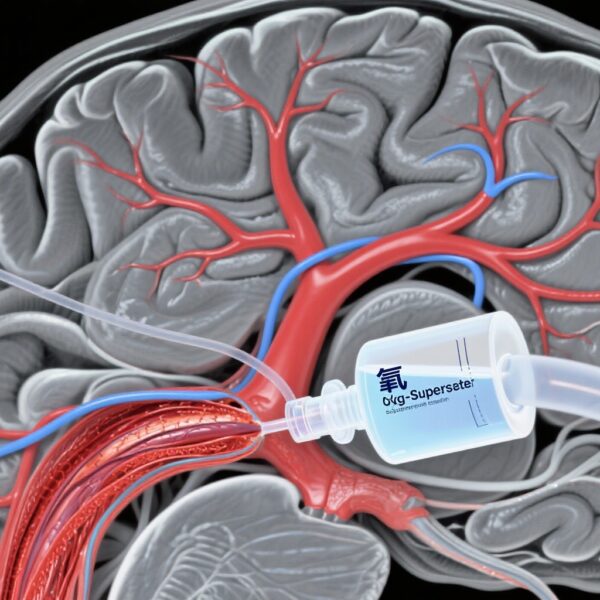Highlight
– No significant difference in mean end-tidal CO2 (EtCO2) values between laryngeal tube (LT) and endotracheal intubation (ETI) in out-of-hospital cardiac arrest (OHCA) resuscitation.
– Increasing EtCO2 trends correlate with return of spontaneous circulation (ROSC) in both airway management groups.
– Interaction between airway device type and EtCO2 trends significantly affects ROSC but not 72-hour survival.
Study Background and Disease Burden
Out-of-hospital cardiac arrest (OHCA) remains a leading cause of mortality globally, with survival rates typically less than 20%. Effective airway management and adequate ventilation during cardiopulmonary resuscitation (CPR) are critical components of post-arrest care. Advanced airway devices are employed to secure the airway and facilitate ventilation, with endotracheal intubation (ETI) historically considered the gold standard. However, supraglottic airway devices such as the laryngeal tube (LT) offer an alternative with potentially easier insertion and fewer adverse events.
End-tidal carbon dioxide (EtCO2) monitoring through capnography provides an indirect, noninvasive measure of pulmonary blood flow and cardiac output during CPR, serving as a physiologic indicator of resuscitation quality and predictors of outcomes such as ROSC. Despite widespread use, differences in ventilation metrics reflected by EtCO2 between LT and ETI during OHCA have not been fully characterized. This study addresses a critical knowledge gap by examining EtCO2 trajectories and their relationship with clinical outcomes based on airway management strategy.
Study Design
This investigation is a secondary analysis of the Pragmatic Airway Resuscitation Trial (PART), a multicenter cluster-crossover randomized clinical trial involving 27 emergency medical services (EMS) agencies grouped into 13 clusters. Conducted between November 1, 2023, and July 8, 2025, the primary PART trial randomized adult patients (≥18 years) experiencing nontraumatic OHCA to airway management with either LT or ETI.

In this secondary analysis, only cases with at least 50% interpretable EtCO2 capnography signals were included, comprising 1113 patients (818 LT, 295 ETI). The primary exposure was the airway device used during resuscitation. Main outcomes assessed included:
– Mean maximal EtCO2 values within sequential 1-minute epochs during resuscitation,
– Trends of EtCO2 over the course of resuscitation,
– Associations between EtCO2 trajectories and clinical endpoints such as sustained ROSC and 72-hour survival.
Statistical comparisons used Mann-Whitney tests for EtCO2 values at 20, 10, and 1 minute from resuscitation start, Cochran-Armitage tests for trend analysis, and multivariable logistic regression models adjusting for baseline covariates and testing interaction effects between airway device and EtCO2 trends.
Key Findings
Among 1113 patients analyzed, the cohort was predominantly male (62.4%) with a median age of 64 years, a majority presenting with nonshockable rhythms (84.6%), and mostly nonpublic arrest locations (89.8%). ROSC was achieved in 17.6% of LT patients and 18.3% of ETI patients, reflecting similar immediate resuscitation success rates.
Figure 2. End-Tidal Carbon Dioxide (EtCO2) Capnography vs Time.

Figure 3. End-Tidal Carbon Dioxide (EtCO2) Capnography vs Time, Stratified by Advanced Airway Technique.

EtCO2 values showed no statistically significant difference between LT and ETI groups at various resuscitation time points:
– 20-minute epoch: 33.9 mm Hg (LT) vs 29.4 mm Hg (ETI), P = .07
– 10-minute epoch: 30.9 mm Hg (LT) vs 28.5 mm Hg (ETI), P = .89
– 1-minute epoch: 32.2 mm Hg (LT) vs 28.3 mm Hg (ETI), P = .28
Distinct EtCO2 trajectories emerged when stratified by ROSC status. Patients who achieved sustained ROSC demonstrated rising EtCO2 levels over resuscitation, irrespective of airway device:
– LT with ROSC: Increase from median 27.9 to 52.3 mm Hg
– LT without ROSC: Decline from 32.6 to 23.5 mm Hg
– ETI with ROSC: Increase from 38.2 to 46.7 mm Hg
– ETI without ROSC: Decline from 27.7 to 20.0 mm Hg
The interaction between airway device type and EtCO2 trend significantly predicted ROSC (OR 1.75, 95% CI 1.25–2.45; P < .001) but was not significantly associated with survival at 72 hours (OR 1.21, 95% CI 0.90–1.61; P = NS). Stratified odds ratios for ROSC were higher for ETI (OR 2.34, 95% CI 1.67–3.26) relative to LT (OR 1.33, 95% CI 1.20–1.47), suggesting that EtCO2 trend changes might have different implications depending on airway management.
Expert Commentary
This secondary analysis provides valuable insight into the nuanced physiology of ventilation and circulation during OHCA resuscitation relative to airway devices. The lack of significant difference in absolute mean EtCO2 values between LT and ETI aligns with prior knowledge suggesting both devices can achieve adequate ventilation under emergent conditions. However, the differential impact of EtCO2 trends and their interaction with airway device choice on ROSC underscores the complexity of interpreting capnography signals in cardiac arrest scenarios.
Several considerations emerge from these findings. First, the increasing EtCO2 trajectory in ROSC patients reflects restoration of pulmonary blood flow and metabolism of CO2, validating EtCO2 as a dynamic marker rather than a single threshold value. Second, the stronger association of EtCO2 trends with ROSC in ETI patients may relate to differences in airway seal, ventilation efficacy, or device placement effects on lung mechanics and CO2 elimination.
Limitations include the observational nature of this secondary analysis within a randomized design, potential confounding by unmeasured CPR quality parameters, and restricted EtCO2 signal availability in about two-thirds of the original cohort. Additionally, the predominance of nonshockable rhythms and nonpublic arrests may limit generalizability to other OHCA populations.
The findings support current resuscitation guidelines endorsing multiple airway management options tailored to provider skill and situational context. They also caution against overreliance on isolated EtCO2 values without considering device type and temporal trends, which may influence clinical decision-making during resuscitation.
Conclusion
In this comprehensive secondary analysis of the PART randomized trial, end-tidal CO2 values did not differ significantly between laryngeal tube and endotracheal intubation during out-of-hospital cardiac arrest. Nevertheless, the interaction between airway device and EtCO2 trends importantly influenced sustained return of spontaneous circulation but not short-term survival, indicating the need for nuanced interpretation of capnography data.
These results highlight the complexity of physiologic monitoring during cardiac arrest and reinforce that airway device selection, operator expertise, and real-time EtCO2 trajectory evaluation together inform optimal resuscitation strategies. Further research is warranted to elucidate mechanisms underlying airway-specific EtCO2 patterns and to refine predictive algorithms integrating capnography with other resuscitation metrics to improve clinical outcomes.
References
1. Nassal MMJ, Elola A, Aramendi E, et al. Advanced Airway Devices and End-Tidal Capnography Trends in Cardiac Arrest: A Secondary Analysis of a Randomized Clinical Trial. JAMA Netw Open. 2025;8(9):e2531511. doi:10.1001/jamanetworkopen.2025.31511 IF: 9.7 Q1
2. Panchal AR, Bartos JA, Cabañas JG, et al. Part 3: Adult Basic and Advanced Life Support: 2020 American Heart Association Guidelines for Cardiopulmonary Resuscitation and Emergency Cardiovascular Care. Circulation. 2020;142(16_suppl_2):S366-S468. doi:10.1161/CIRCULATIONAHA.120.026347
3. Grunau B, Tubman A, Molchanova M, et al. Comparison of Outcomes Between Endotracheal Intubation and Supraglottic Airways in Out-of-Hospital Cardiac Arrest: A Systematic Review and Meta-Analysis. Resuscitation. 2018;131:91-100. doi:10.1016/j.resuscitation.2018.07.007 IF: 4.6 Q1
4. Kramer-Johansen J, Beekley A, Aneman A, et al. Capnography during CPR: Current Evidence and Recommendations for Clinical Practice. Resuscitation. 2020;147:168-178. doi:10.1016/j.resuscitation.2020.01.004 IF: 4.6 Q1


